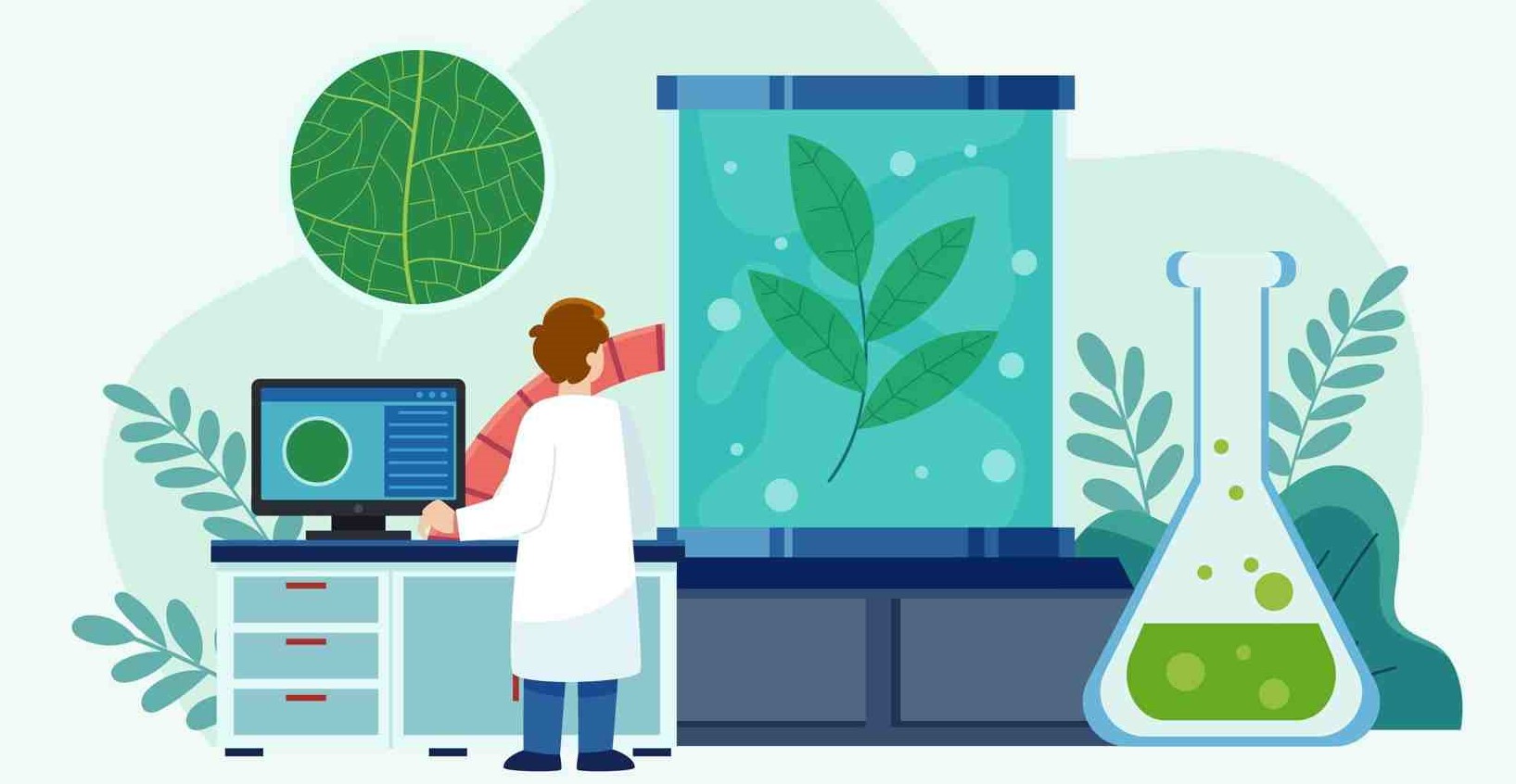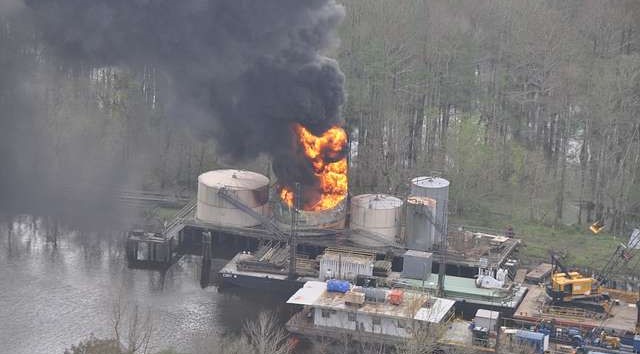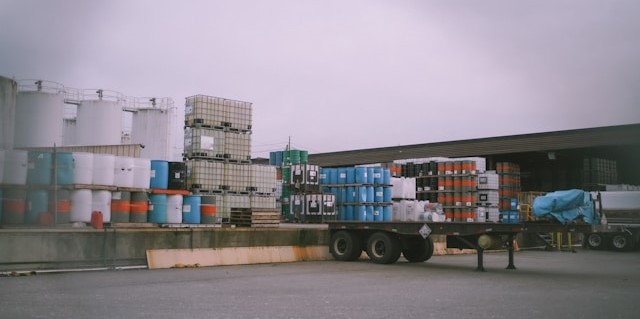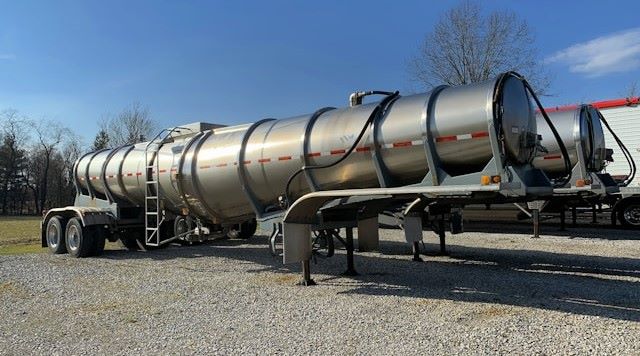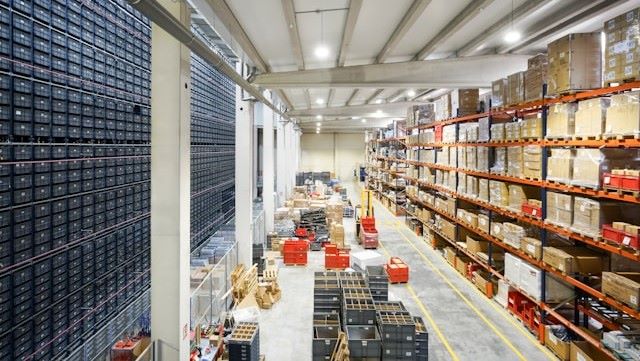-
Why Chemical Traders Should look for Profit in Biochemical Markets
 Continue Reading
Continue ReadingEurope’s chemical industry is entering a new chapter. One where sustainability, regulatory pressure, and shifting consumer preferences are pushing the sector towards greener alternatives.
The result is a surge in demand for biochemicals—derived from renewable biological sources—as the raw materials which are increasingly replacing traditional petrochemicals.
This is providing new opportunities for small and medium-sized enterprises (SMEs), independent chemical traders, or any manufacturer looking to make more sustainable products. As unlike larger manufacturers or chemical companies which are burdened by legacy infrastructure, SMEs and smaller operators in the chemical sector can pivot quickly, adapt to emerging trends, and carve out profitable niches.
Europe is actively driving the global green transformation where the EU’s Green Deal is setting ambitious goals, including climate neutrality by 2050, while regulations like REACH and CLP are being designed to protect human health and the environment. For decades, manufacturers and consumers have consistently maintained a clear trend favouring chemicals that are sustainably sourced with low toxicity and biodegradability.
Furthermore, national governments have held bioeconomy strategies in countries like Germany, France, and the Netherlands which inject funding and foster collaboration into the bio-based sector.
These combined factors of regulatory alignment from government and demand from consumers are providing a generational event in industrial chemical markets.
As Wayne Ashton, a senior vice president at International Flavors & Fragrances (IFF) made clear in a recent interview with the industry journal CE&N, “The customer base [for biochemicals] is in Europe.” Adding that, “It’s also important to say that the European customers are probably a little bit more advanced in wanting sustainability.”
With this in mind, it is worth looking at some of the bio-based chemicals which are showing the strongest commercial promise. These include:
- Lactic acid and citric acid: Widely used in food, pharmaceuticals, and cleaning agents.
- Bio-based solvents: Such as ethyl lactate and D-limonene, replacing traditional VOC-heavy solvents.
- Bioplastics: Polylactic acid (PLA) and polyhydroxyalkanoates (PHA) are gaining traction in packaging and agriculture.
- Enzymes and fermentation products: Used in food processing, textiles, and bio-detergents.
These products are not only in demand but often command premium pricing, especially when backed by sustainability credentials like EU Ecolabel, USDA BioPreferred, or ISCC+ certification.
Moreover, it is important to note that European chemical companies are leading the way in investment in this field. While the Middle East will always attempt to gain market advantage from its oil reserves and with President Trump seemingly happy to ignore the problem of climate change, there is a clear market niche which is rapidly growing for biochemical products.
“European agricultural companies are getting involved with bioproduction firms to find ways to use all available streams,” notes the CE&N report. “In May, for example, Südzucker, Europe’s number 1 supplier of sugar products, renewed a raw material partnership with the biotech company Afyren. Under the agreement, Südzucker supplies nonfood agricultural by-products such as feedstocks for fermentation-based conversion to a family of seven carboxylic acids—chemicals such as butyric acid and valeric acid—at Afyren’s facility in Carling Saint-Avold, France.”
Additionally, the Südzucker group of enterprises’ major ethanol producer, CropEnergies, plans to build a factory in Elsteraue, Germany, in 2026 to turn its biomass-derived ethanol into ethyl acetate. The factory will generate hydrogen as a byproduct and produce 50,000 t of the solvent annually when it opens.
Caroline Petigny, chief sustainability officer at Afyren, believes that this growth in biochemical investment is based on market demand. “Europe is the region in the world which, in terms of consumers,” she explains, “is the most advanced in understanding, knowledge, and expectation of sustainability.”
For many though, the Europe’s boom in biochemicals is not just a chance to jump on the green bandwagon. Nor is it a case of large multi-national corporations ‘green washing’. Instead, it is the opportunity to get value from Europe’s unique position as a leader in sustainability. A way to gain intellectual advantage and capture the value to be had by avoiding petrochemicals and the burden of fossil fuel dependency.
Related articles: What Europe Can Learn from the U.S. Chemical Safety Debate or How Chemical Companies Can Handle Traceability
Because whichever side you sit on in terms of climate change, there is the compelling argument of raw material independency. For a region with dwindling supplies in oil and hard to reach coal, which has had the threat of Russia turning off its gas, the notion of being self-sufficient and sustainable in industrial chemicals is tempting.
As Afyren’s Petigny notes, “The bioeconomy is, by essence, a regional value chain. “We need to be self-confident in Europe and keep the strategy of investing in our industry so we can make sure we have the important value chains in our country and not depend on others.”
For smaller manufacturers and independent industrial chemical traders that is a very good reason to take another look at biochemical industry supply, demand, and bottom line.
-
What Europe Can Learn from the U.S. Chemical Safety Debate
 Continue Reading
Continue ReadingThe Trump administration’s approach to regulation, especially in the chemical sector, reflects a broad political ethos: eliminate perceived bureaucratic inefficiencies, reduce federal oversight, and promote business growth.
One of its most controversial moves in this direction is the proposed elimination of the U.S. Chemical Safety Board. The CSB) is a small but influential federal agency which Republicans believe is an unnecessary burden to economic growth in the chemical industry.
As the UK journal Chemistry World reports, “The [Trump] administration claims in the CSB’s budget request that the agency ‘duplicates substantial capabilities’ in the US Environmental Protection Agency (EPA) and the federal Occupational Safety and Health Administration (OSHA) to investigate chemical-related mishaps. It also says the agency generates ‘unprompted studies of the chemical industry and recommends policies that they have no authority to create or enforce,’ suggesting that this function should reside within agencies that have authority to issue regulations.”
The plan to shutter the CSB has sparked a divided reaction. On one side are proponents of deregulation who tout economic freedom and competitiveness; on the other, critics warn of increased risk to public safety and environmental health.
But how do these arguments stand up and would Trump’s model of deregulation be viable in a European context?
What is the Chemical Safety Board?
Established in 1990 as part of the Clean Air Act Amendments, the CSB is an independent federal agency tasked with investigating industrial chemical accidents. Unlike regulatory agencies such as the EPA or OSHA, the CSB does not issue fines or enforce rules. Instead, its power lies in conducting thorough investigations, publishing detailed reports, and making non-binding but influential safety recommendations. Over the years, the CSB has contributed significantly to improving chemical safety in industries ranging from oil refining to fertilizer production.
The Trump Administration’s Proposal
Since the 2018 budget, the Trump administration has been suggesting that the CSB should be shutdown, calling it unneeded and wasteful. The White House claims that its abolition would save taxpayers about $14 million a year and that its tasks could be taken over by already-existing agencies. This proposal was in line with President Trump’s executive order to reduce federal regulations, which famously required the elimination of two existing regulations for every new one submitted.
Is Deregulation Good for Business?
Supporters of the proposal, largely those in business and on the right of the political spectrum, contend that doing away with the CSB will simplify regulations and enable job growth. Overlapping jurisdictions and redundant inspections have long been criticised by the chemical industry, which claims that these practices hinder innovation and increase needless expenses.
Efforts to simplify regulations have received widespread support from industry-backed organisations like the American Chemistry Council. They believe that by dismantling what they perceive to be an advisory-only organisation, funds could be re-allocated to more effective enforcement or to the advancement of technology. The Trump administration’s broader plan, which includes easing enforcement and reversing EPA regulations is being hailed as a corner stone of the Make America Great Again slogan—a way to boost American manufacturing and guarantee energy independence.
Is Deregulation Gambling with Safety?
However, critics view the proposed closure of the CSB as a risk too far. They cite how the agency has played a unique role in uncovering systemic failures in chemical safety and how it has pushed for improvements when other agencies have been slow to react to chemical industry accidents.
This is largely because while the OSHA and the EPA have enforcement powers neither is equipped to conduct the kind of root-cause investigations that the CSB undertakes.
Certainly, CSB reports have led to critical reforms in tank design, alarm systems, and explosion mitigation, while its work was also instrumental in understanding chemical industry disasters such as the Deepwater Horizon oil spill and the 2013 explosion at a Texan fertilizer plant. Without the CSB acting as an independent investigative body, critics argue, that the public and policymakers may lose an impartial source of safety information. Moreover, communities near industrial sites—often low-income or marginalised—would be at greater risk.
Related articles: How Chemical Companies Can Handle Traceability or What the EU-UK Trade Deal Means for the Chemical Sector
One former employee of the CSB believes that the money saved does not justify the risks involved. Jordan Barab, worked on workplace safety and also served as a deputy assistant secretary of OSHA from 2009 to 2017, and has spoken out against the Administration’s plans, stating on social media that, “Trump wants to shut down the Chemical Safety Board which has a unique role investigating chemical plant incidents. The result: more chemical releases, worker deaths and community pollution. All to save $14 million.”
Even though the CSB was not ultimately defunded by Congress, the repeated attempts to do so undermined staff morale and long-term planning. It also sent a message that chemical safety might no longer be a federal priority.
Is Trump’s Chemical Industry Regulatory Model Suitable for Europe?
Europe’s approach to chemical safety regulation differs significantly. The European Union operates under the precautionary principle, often requiring proof of safety before chemicals can be marketed. Regulatory frameworks like REACH (Registration, Evaluation, Authorisation and Restriction of Chemicals) and CLP (Classification, Labelling and Packaging) are stringent and prevention oriented.
European agencies such as the European Chemicals Agency (ECHA) focus on risk assessment and hazard communication, rather than post-incident analysis. However, some European countries do have independent safety boards for transport and industrial accidents. These are often integrated more closely with enforcement bodies than the CSB is in the U.S.
Adopting a deregulatory, industry-led model in Europe would likely face resistance—not only from regulators but also from the public and environmental NGOs. The EU’s high safety standards are part of its global brand and a foundation for public trust in industry. A shift toward U.S.-style deregulation could undermine both.
The Trump administration’s proposal to eliminate the Chemical Safety Board highlights a basic divide: should governments prioritise economic growth by reducing regulatory oversight, or is independent investigation of chemical industry safety essential for public and environmental protection?
While business groups see deregulation as a boost for competitiveness, critics argue that it exposes nature and communities to preventable risks.
Europe’s more stringent, preventive model offers a contrasting approach—one rooted in the belief that safety must be built in, not just investigated after the fact. Whether the U.S. approach represents pragmatic streamlining or reckless cost-cutting remains a question of political philosophy and public values.
Nowhere is this debate more relevant than in the chemical industry—where innovation is essential, yet mistakes can be deadly. As such, the balance between progress and economic growth versus regulation and public/environmental health remains ongoing.
Photo credit: Aleksander Littlewolf, Flickr, Nara, Wikipedia, & Flickr
-
How Chemical Companies Can Handle Traceability
 Continue Reading
Continue ReadingIn the modern business world, traceability is no longer a luxury — it is a necessity.
Nowhere is this more true than for chemical companies where the pressure to demonstrate the origin, composition, and safe disposal of products is most vigorous. In Europe, this is driven by a mix of stringent regulations such as REACH (Registration, Evaluation, Authorisation and Restriction of Chemicals), growing customer demand for transparency, and increased scrutiny around environmental and human health impacts.
At the heart of a chemical product’s traceability is the concept of product lifecycle management. Known simply as PLM, product lifecycle management involves collating the data on production processes, raw material sources, handlers, designers, and sales information from a chemical’s inception to retirement.
Related articles: How AI Can Assist Even the Smallest Chemical Company or How Can Chemicals Trading be Made More Efficient?
This transparency is vital not just for legal compliance, but also for rapid responses to quality issues, recalls, or sustainability audits. Without managing traceability, chemical companies risk non-compliance, reputational damage, and financial penalties.
Moreover, as the EU moves towards a circular economy and climate-neutral goals, traceability supports sustainability claims and helps companies measure progress against green targets. In essence, it is becoming a core part of the chemical sector.
As is to be expected, there are numerous sets of laws and standards to be met with regards to traceability. As the British Chemical Industry Journal noted in a recent report, “Whether dealing with REACH, OSHA, EPA, CLP, or international standards like ISO 9001 or GMP, chemical manufacturers face some of the strictest requirements in global industry.” Concluding that, “A traceable production process is often a non-negotiable prerequisite for gaining market access or passing audits.”
But because most chemical products are manufactured as a composite of many chemicals and industrial feedstocks, establishing a clear path can be a daunting task.
Fortunately, the Chemical Industry Journal also gives advice on how best to achieve traceability by breaking the task down into more manageable portions. When doing so, areas to be considered include:
Clear Documentation and Communication: Make certain that traceability data, such as batch records, safety data sheets (SDS), and COAs (Certificates of Analysis), is readily available and regularly maintained. If quality problems arise or if recalls become necessary, open and honest communication with suppliers and consumers can help improve credibility and minimise miscommunication.
Labelling, Barcodes, and GHS Compliance: Physical identification of a chemical product is still necessary even with increasingly digitalised settings. For inventory, shipping, and safety compliance, labelling systems should be able to scan barcodes and integrate with ERP systems to connect physical containers with digital data.
Process Tracking and Operator Accountability: Time stamps and operator information should be recorded at every stage of the production process, from weighing and mixing to reaction monitoring and packaging. In the event of deviations or incidents, this offers a documented trail and facilitates root-cause analysis.
Lot and Batch Tracking: Manufacturers of chemicals must use lot or batch numbers to keep track of their raw ingredients, intermediates, and final chemical products. This promotes adherence to safety data sheets (SDS) and regulatory filings and provides complete visibility into which ingredients went into which finished goods.
Make Use of Specialised Traceability Software: The demands of modern chemical manufacture are often simply too great for manual processes to handle. Operational effectiveness, compliance, and real-time visibility are guaranteed if ERP system software with integrated traceability is employed.
Not only is this list not exhaustive, but chemical companies may also adopt some, none, or all of the approaches as they best see fit. For example, the use of traceability software may be a vital tool for one chemical supplier but may be too expensive and unnecessary for another.
Here are how some chemical companies have approached this challenge.
1. ICA Group: Centralizing Compliance with Trace One SDS Authoring
ICA Group, a global manufacturer of wood and glass coatings, faced challenges in keeping up with rapidly changing regulations like REACH, CLP, and GHS. Their existing system struggled to stay current with safety data sheet (SDS) information, leading to compliance risks. By adopting Trace One SDS Authoring, ICA Group centralized its compliance processes, ensuring up-to-date regulatory data and streamlined workflows.
2. BASF: Digitalizing Supply Chain Traceability
As a much larger chemical business, BASF were able to implement their own digital traceability system. Called ‘BASF 4.0’ it is a traceability function which utilises sensors, blockchain technology, and data analytics to achieve end-to-end tracking of raw materials and chemical products. By doing so, BASF hope to enhance efficiency in the paperwork process (now digital), reduce costs, and improve customer satisfaction. Additionally, BASF leveraged traceability data for process optimization and risk reduction.
3. REACHLaw: Supporting Multi-Regional Regulatory Compliance
A North American chemical manufacturer engaged REACHLaw to navigate compliance with EU REACH, Turkey’s KKDIK, and UK REACH regulations. REACHLaw acted as the Only Representative in each region, facilitating registrations and ensuring market access.
Traceability is no longer a back-office concern for chemical companies—it is a strategic imperative. Whether the goal is regulatory compliance, operational excellence, or sustainability leadership, robust traceability systems are fundamental to success.
As demonstrated by chemical industry leaders like ICA Group, BASF, and REACHLaw, investing in digital tools, process transparency, and regulatory foresight not only mitigates risk but also creates competitive advantage. In an era of complex supply chains and rising stakeholder expectations, traceability is the thread that holds accountability, safety, and innovation together—and chemical companies which ignore it, do so at their own risk.
Photo credit: Jean Woloszczky on Unsplash, Leslie Saunders, Chelaxy Designs, Alberto Rodriguez, & Guerrilla Buzz

